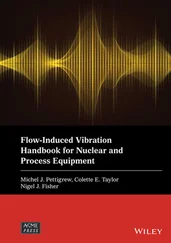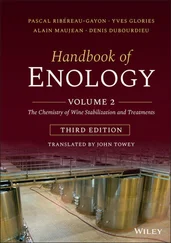Youhong Tang Institute for NanoScale Science and Technology, Medical Device Research Institute,College of Science and Engineering, Flinders University, SA, Australia
Javad Tavakoli Centre for Health Technologies, School of Biomedical Engineering, Faculty of Engineering and Information Technology, University of Technology Sydney, NSW, Australia
Eethamukkala Ubba PCFM Lab, GDHPPC Lab, Guangdong Engineering Technology Research Center for High‐ performance Organic and Polymer Photoelectric Functional Films, State Key Laboratory of OEMT, School of Chemistry, Sun Yat‐sen University, Guangzhou, China
Guan Wang Beijing Advanced Innovation Center for Soft Matter Science and Engineering, Beijing University of Chemical Technology, Beijing, China
Jianguo Wang Inner Mongolia Key Laboratory of Fine Organic Synthesis, College of Chemistry and Chemical Engineering, Inner Mongolia University, Hohhot, China
Qiang Wei Ningbo Institute of Materials Technology & Engineering, Chinese Academy Sciences, Ningbo, China
Center of Materials Science and Optoelectronics Engineering, University of Chinese Academy of Sciences, Beijing, China
Alex Y. H. Wong Ming Wai Lau Centre for Reparative Medicine, Karolinska Institutet, Hong Kong, China
Sheng Xie State Key Laboratory of Chemo/Biosensing and Chemometrics, College of Chemistry and Chemical Engineering, Hunan University, Changsha, Hunan, China
Yun Yan Beijing National Laboratory for Molecular Sciences (BNLMS), College of Chemistry and Molecular Engineering, Peking University, Beijing, China
Zhan Yang PCFM Lab, GDHPPC Lab, Guangdong Engineering Technology Research Center for High‐ performance Organic and Polymer Photoelectric Functional Films, State Key Laboratory of OEMT, School of Chemistry, Sun Yat‐sen University, Guangzhou, China
Zhiyong Yang PCFM Lab, GDHPPC Lab, Guangdong Engineering Technology Research Center for High‐ performance Organic and Polymer Photoelectric Functional Films, State Key Laboratory of OEMT, School of Chemistry, Sun Yat‐sen University, Guangzhou, China
Bicheng Yao Department of Chemistry and Physics, La Trobe Institute for Molecular Science, La Trobe University, Melbourne, VIC, Australia
Xiaoming Yu Key Laboratory of Reproductive Genetics (Ministry of Education), Women’s Hospital, Zhejiang University School of Medicine, Hangzhou, China
Chen Zhang Department of Biomedical Engineering, Southern University of Science and Technology, Shenzhen, Guangdong, China
Deqing Zhang Beijing National Laboratory for Molecular Sciences, CAS Key Laboratories of Organic Solids and Analytical Chemistry for Living Biosystems, Institute of Chemistry, Chinese Academy of Sciences, Beijing, China
Jiasen Zhang Ningbo Institute of Materials Technology & Engineering, Chinese Academy Sciences, Ningbo, China
Center of Materials Science and Optoelectronics Engineering, University of Chinese Academy of Sciences, Beijing, China
Key Laboratory of Advanced Textile Materials and Manufacturing Technology, Ministry of Education, Zhejiang Sci‐Tech University, Hangzhou, China
Yi Zhang PCFM Lab, GDHPPC Lab, Guangdong Engineering Technology Research Center for High‐ performance Organic and Polymer Photoelectric Functional Films, State Key Laboratory of OEMT, School of Chemistry, Sun Yat‐sen University, Guangzhou, China
Juan Zhao School of Materials Science & Engineering, Sun Yat‐sen University, Guangzhou, China
Ming‐Qiang Zhu Wuhan National Laboratory for Optoelectronics, School of Optics and Electronic Information, Huazhong University of Science and Technology, Wuhan, China
Preface to Handbook of Aggregation‐Induced Emission
Aggregation‐induced emission (AIE) describes a photophysical phenomenon in which molecular aggregate exhibits stronger emission than its single‐molecule counterpart. AIE research provides an excellent platform to explore aggregate behaviours since it emphasizes the new properties endowed by molecular aggregates beyond the microscopic molecular level. The 21‐year development of AIE research has witnessed the great achievements in this area, including mechanistic understanding, structure‐property relationship, and high‐tech applications. The achievements of AIE research demonstrate that many behaviours and functions that are absent in molecular species can be founded in molecular aggregates. Since the properties of molecular ensembles are closer to those of macroscopic materials, AIE research is of both scientific value and technological importance for real applications.
Due to its great value and huge potential, AIE research is attracting more and more attention from chemistry, physics, materials science, medical and biomedical science and shows promising applications in these fields. Noteworthy, as a general platform to study aggregate science, AIE keeps integrating with other research fields involving materials, biology, medicine, energy and environment, and injects new vitality into these fields. When more researchers are working on this field, more breakthroughs in both fundamental research and application are envisioned in the future.
This handbook is an essential reading for scientists and engineers who are designing optoelectronic materials and chemical/biomedical sensors. It is also a valuable reference book to academic researchers in materials science, physical and synthetic organic chemistry as well as physicists and biological chemists.
Preface to Volume 3: Applications
This Volume updates the emerging high‐tech applications of aggregation‐induced emission (AIE) luminogens. AIE offers a new platform application for researchers to look into the light‐emitting processes from luminogen aggregates, from which useful information on structure‐property relationships may be collected. Technological utilizations of AIE materials in the areas of electroluminescence, mechanochromism, chiral recognition, ionic sensing, biomolecule detection, cell imaging, and in vivo phototheranostics are reported. Potential applications in room temperature phosphorescence, liquid crystals, circularly polarized luminescence, and organic lasing are also introduced in this volume.
Youhong Tang, Flinders University, Australia
Ben Zhong Tang, The Chinese University of Hong Kong, Shenzhen, China
1 AIE‐active Emitters and Their Applications in OLEDs
Qiang Wei1,2, Jiasen Zhang1,2,3,, and Ziyi Ge1,2
1 Ningbo Institute of Materials Technology & Engineering, Chinese Academy Sciences, Ningbo, China
2 Center of Materials Science and Optoelectronics Engineering, University of Chinese Academy of Sciences, Beijing, China
3 Key Laboratory of Advanced Textile Materials and Manufacturing Technology, Ministry of Education, Zhejiang Sci‐Tech University, Hangzhou, China
Organic light‐emitting diode (OLED) can convert electricity into light within organic emissive layers (EMLs) under external voltage. Since the pioneering work of Tang and VanSlyke [1], this technology has seen a rapid progress in the past three decades and has already realized commercial application in various electronic appliances, such as smartwatches, mobile phones, cameras, and so on [2–4], owing to its significant advantages, such as low cost, low‐driving voltage, light weightiness, and fast response [5–10]. Furthermore, this technology was regarded as the future major displaying and lighting technology [11–13].
Typical OLED devices consist of two electrodes, i.e., anode and cathode, and several organic layers sandwich between these two electrodes. Within OLED devices, electrons and holes are injected from cathode and anode, respectively, and pass through several organic layers, such as hole injection layer (HIL), electron injection layer (HIL), hole transport layer (HTL), and electron transport layer (ETL), and finally recombine in the EML with a small part of photons passing through transparent electrode to emit light ( Figure 1.1) [12]. As for OLEDs, the organic EML plays a vital role in determining the devices’ performances, especially for color, luminance, and efficiency. OLED devices’ color was judged according to Commission Internationale de l’Eclairage (CIE) coordinates [15, 16]. Internal quantum efficiency (IQE) and external quantum efficiency (EQE), defined as the numerical ratio of photons generated within or out of the devices to electron‐hole pairs injected, are usually applied to evaluate the OLEDs’ capability of electron–photon conversion [17, 18]. Compared with IQE, the parameter EQE are more reliable, which is determined by the photoluminescence quantum efficiency (PLQY) of emitters in the solid films, balanced factor of electrons and holes, and out‐coupling efficiency. Because photons are not only emitted out of but also generated within the EMLs, the emitters’ structures, aggregated state, and properties can strongly determine OLED manufacturing process and performance [19].
Читать дальше












